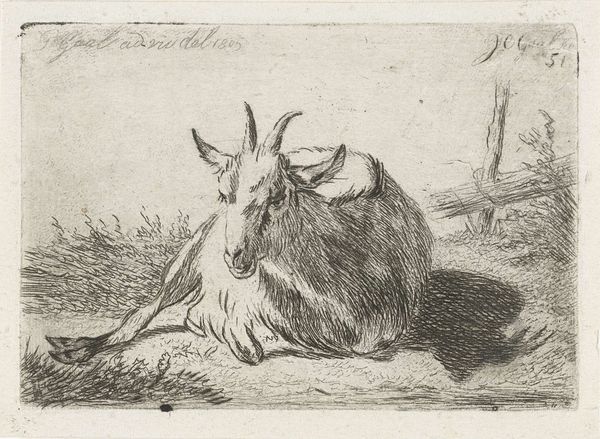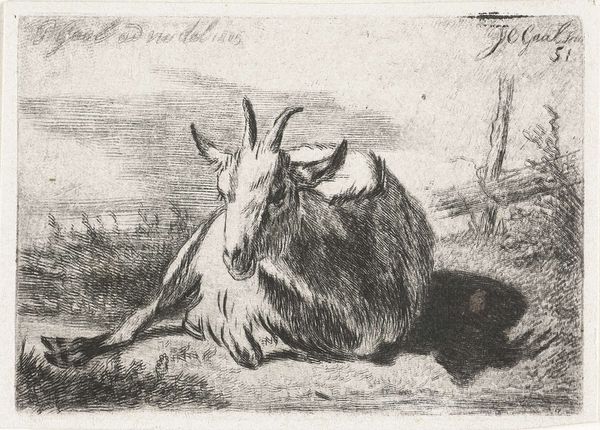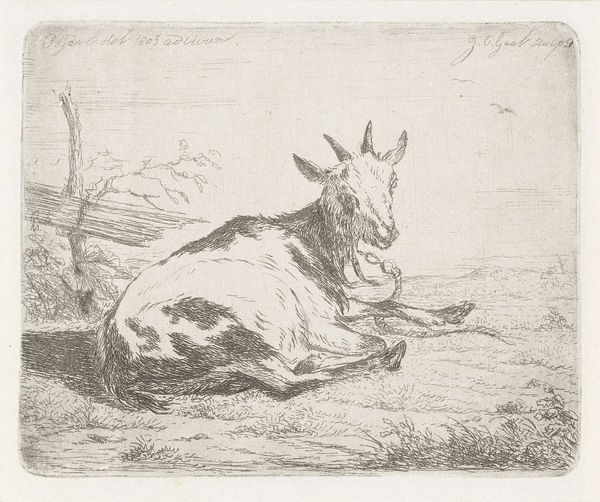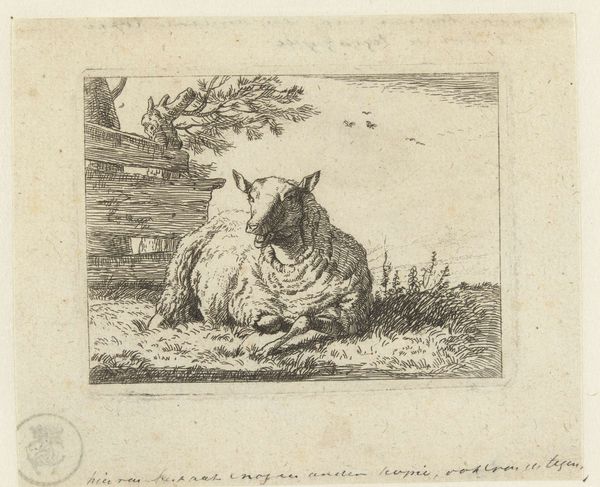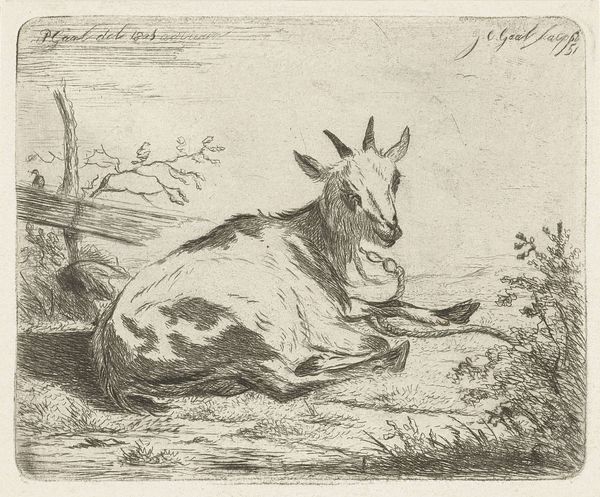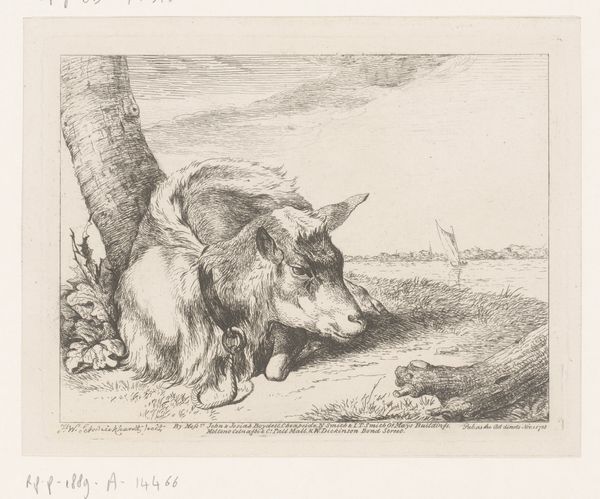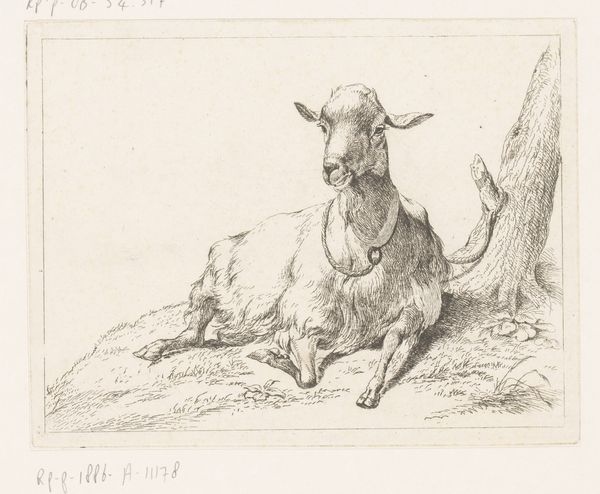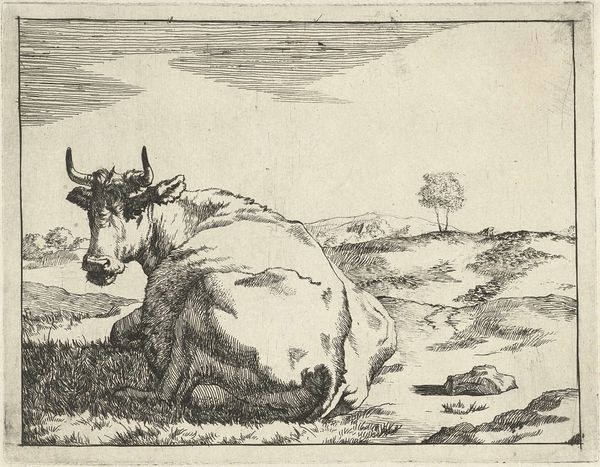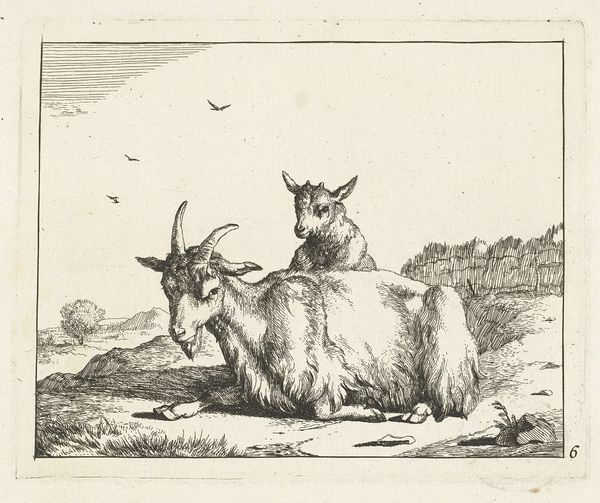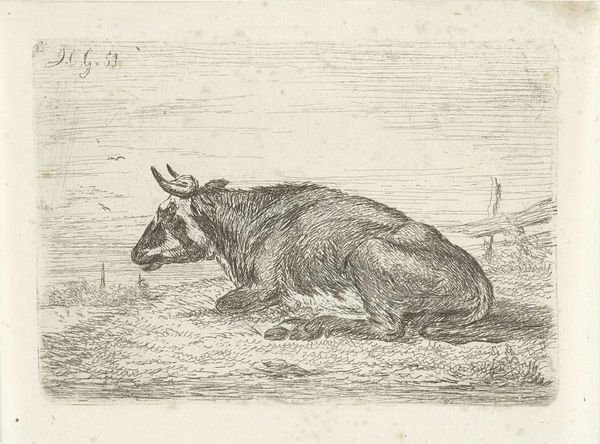
drawing, print, etching
#
portrait
#
pencil drawn
#
drawing
#
animal
# print
#
etching
#
pencil sketch
#
landscape
#
realism
Dimensions: height 55 mm, width 80 mm
Copyright: Rijks Museum: Open Domain
Curator: Jacobus Cornelis Gaal created this etching, titled “Liggende geit, naar links”—or “Lying goat, to the left”—in 1851. It's currently held in the Rijksmuseum. Editor: It strikes me as unassuming. The tonality is very quiet, creating a sense of rustic calm. Curator: The realism employed to render the goat invites meticulous consideration. The varying densities of etched lines articulate the animal’s form, lending volume and texture. Editor: Yes, notice how the varying lines were printed—there's an explicit record of labor, an act of impression! Considering its rural subject matter, the social role of goats, typically livestock and providing milk and fiber, speaks to the material circumstances of Dutch agrarian life. Curator: Absolutely. But do we consider the landscape’s structural function? Observe how the wooden fence in the upper right contrasts to direct the viewer's gaze. It acts as a horizontal anchor for the pastoral scene. Editor: You know, I keep circling back to how these prints served specific functions for Dutch art consumers; an affordable item. What were people actually doing with these objects? Were they tacked to the walls of humble farmhouses? Curator: An intriguing consideration—placing value on not only what it represents, but on its life *after* its creation. It's impossible not to think about realism here, which became prominent from the late 1840s through the 1870s. We also think about Courbet rejecting idealized portrayals to create something true to observed reality. Editor: It all stems from materiality, doesn't it? In any case, thank you for teasing out these rich points of convergence. Curator: Thank *you*. Now when looking, hopefully we understand the many different contexts that apply!
Comments
No comments
Be the first to comment and join the conversation on the ultimate creative platform.
